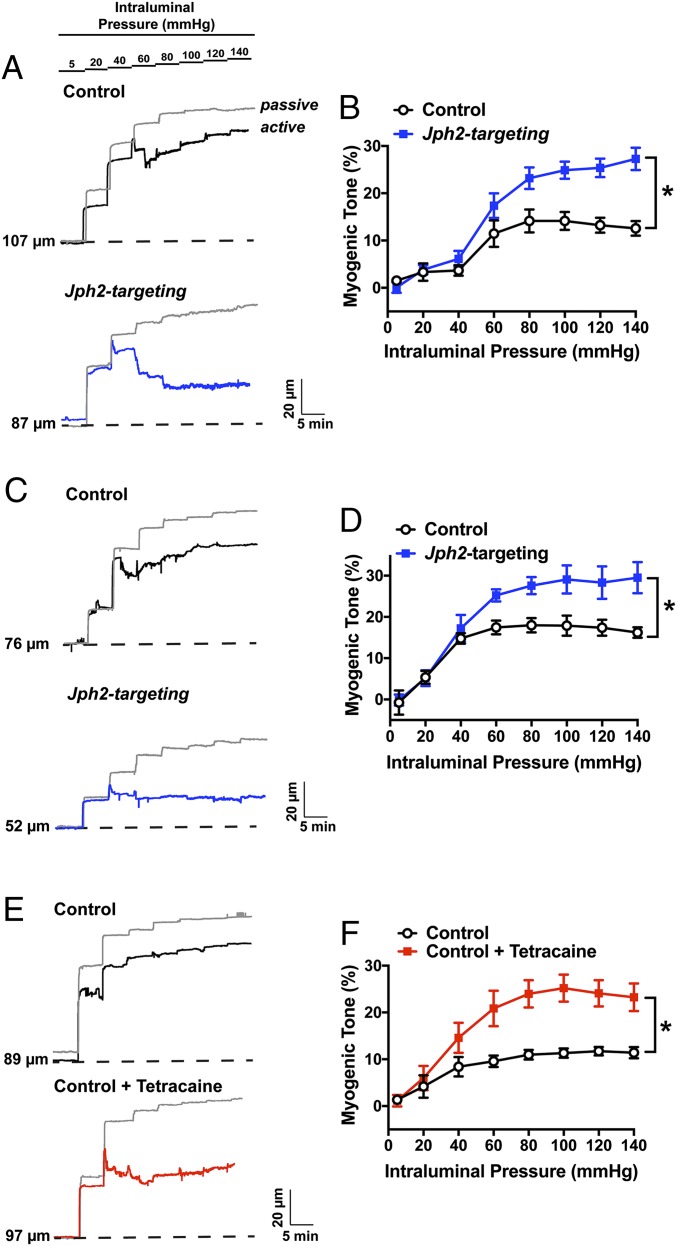Fig. 5.
Jph2 knockdown causes vascular hypercontractility. (A) Representative traces showing changes in luminal diameter over a range of intraluminal pressures (5 to 140 mmHg) for cerebral arteries treated with control (black) or Jph2-targeting (blue) morpholinos. The passive response to changes in intraluminal pressure for both arteries is indicated by the gray trace. (B) Summary data for myogenic tone as a function of intraluminal pressure for both groups (n = 6 arteries per group from 4 to 5 animals; *P < 0.05). (C) Representative traces showing changes in luminal diameter over a range of intraluminal pressures (5 to 140 mmHg) for mesenteric arteries treated with control (black) or Jph2-targeting (blue) morpholinos. The passive response to changes in intraluminal pressure for both groups is indicated by the gray trace. (D) Summary data for myogenic tone as a function of intraluminal pressure for both groups (n = 6 arteries per group from 4 to 5 animals; *P < 0.05). (E) Representative traces showing changes in luminal diameter over a range of intraluminal pressures (5 to 140 mmHg) for cerebral arteries treated with control morpholinos (black) or cerebral arteries treated with control morpholinos in the presence of tetracaine (10 µM; red). The passive response to changes in intraluminal pressure for both arteries is indicated by the gray trace. (F) Summary data for myogenic tone as a function of intraluminal pressure for both groups (n = 6 arteries per group from 4 to 5 animals; *P < 0.05).

